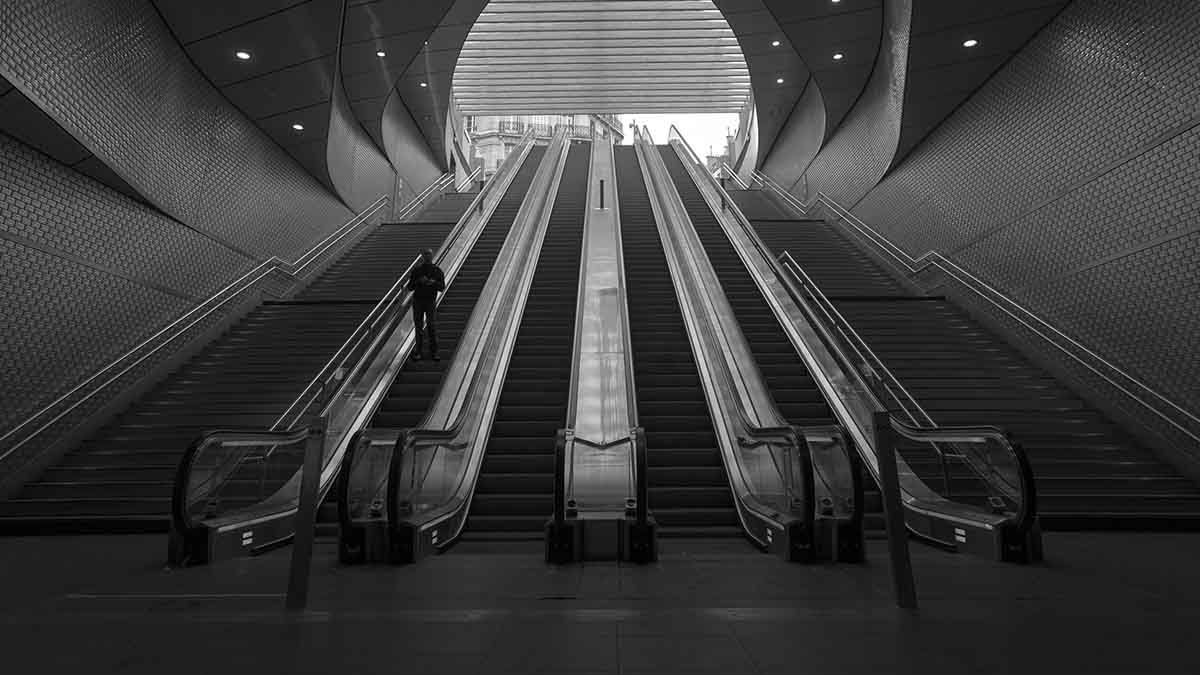
Are we going to live in caves soon?
Publié le 14.01.2020 HNEC
Underground cities have long been sci-fi fodder, but now governments and planners are taking them seriously. One of the biggest challenges to overcome is convincing people to be comfortable underground
Back in 1800 BC, the people of the Cappadocia region of modern-day Turkey decided their environment was so hostile – with extreme weather and the constant threat of war – that they dug an entire city underground. Derinkuyu, the oldest underground city still in existence, housed 20,000 people, providing schools, houses, shopping areas and places of worship protected by large stone doors which allowed each floor to be closed off separately.

©WIRED
In 2010, Helsinki, Finland, essentially took the same approach. The city council approved an Underground Master Plan, completed in 2019, that covers the city’s entire 214 square kilometres – combining energy conservation, shelter from the long, cold winter and an enormous prepper bunker in case of Russian aggression.
But it isn't just security and seasonal weather touted as reasons for living underground. Subterranean living offers an alternative to huge tower blocks and growing populations. Asmo Jaaksi, a partner at Helsinki architectural practice JKMM and the chief architect of the city’s underground Amos Rex Museum, says living underground conserves heat and may, for some, be one of the safest places as the climate emergency escalates.
Helsinki has long pioneered underground living – the Temppeliaukio Church, designed by architects Timo and Tuomo Suomalainen was sunk into the city’s Toolo district in 1969 and, in 1993, the Itakeskus Swimming Hall – a large recreation centre that can handle 1,000 customers on an average day and converts into an emergency shelter with space for 3,800 people.
The space above the earth is getting scarce
“Helsinki stands on bedrock – a good foundations and very stable ground,” Jaaksi says. “The city is very overcrowded, and we have such long, dark and cold winters. Underground offers more room and connects us together away from the bad weather.” Ilkka Vähäaho, the head of Helsinki’s geotechnical division, agrees. Vähäaho says other main drivers for developing underground include: “the Finnish need to have open spaces even in the city centre – taking parts of the city underground would allow more open space on the surface.”
This is where Helsinki’s plan could be pioneering a new attitude to subterranean living. With 60 per cent of the world’s population expected to be living in cities by 2050, meaning housing needs to be found for some 2.5 billion people, urban land is an increasingly limited resource. There is a practical limit to how high buildings can be built and due to space constraints, protected buildings or districts and green belts, many cities, such as Paris, Mexico City and Singapore are considering the answer lies not in more skyscrapers – instead, why not build down?
Earth- instead of Skyscrapers
In 2017, Paris launched a competition, called Reinvent Paris 2, which asked designers to come up with uses for currently unused or under-used city-owned plots – most of which are underground. These include basements of historic buildings, tunnels freed up after cars were banned from the lower roads beside the Seine, unused reservoirs, old parking lots and former abattoirs. They have been turned into restaurants, shops, and a micro farm for edible insects.
Architects in Mexico City have taken another approach: proposing a 300m underground pyramid, dubbed the Earthscraper, that is planned to sit as a mini-city beneath Mexico City’s main square. However, a $800 million (£620m) price tag saw the plans shelved.
Singapore digs in
In Singapore, meanwhile, the government has already invested more than $188m (£146m) in engineering and research into underground construction and has modified its property rights laws so that all basements now belong automatically to the state. According to Singapore’s Department of Statistics, a population of 5.53m people share the island’s mere 719 square kilometres of land. This makes it the third most densely populated place on Earth. To date, the city-state has built upward – with apartment buildings reaching as high as 70 stories – whilst reclaiming land to push out the island’s coastline. But with projections for 1.5m more people in the next 15 years, Singapore’s options are as limited as its space.
The city is exploring the idea of an Underground Science Park 80 metres below the surface, which will house 4.500 scientists and researchers in an earthscraper with underground developments for retail parks, green city infrastructures, highways, train lines and channels for air-conditioning pipe work. The design is cylindrical to withstand earthquakes.
Read the full article here.
About the author
Stephen Armstrong is staff author of WIRED.UK
At Vontobel we are following scientific research with great curiosity and attention. This gives us the chance to recognize new investment opportunities at an early stage. That’s why our thematic portfolios and thematic investments also reflect megatrends such as the modern urbanisation: by considering companies that are making valuable contributions to solving global challenges.
Who are we? How do we live today? And how will the climate change our lives? How the future will unfold is preoccupying society more than ever, with engineers, doctors, politicians – each one of us, in fact – seeking answers. This report on underground cities is one of many contributions that shed light on the theme “Urbanisation" from a new, inspiring perspective. We are publishing them here as part of our series “Impact”.
Publié le 14.01.2020 HNEC